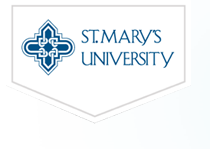Files
Download Full Text (2.3 MB)
Digital Publisher
Digital Commons at St. Mary's University
Publication Date
Spring 2025
Keywords
supply chain disruption; good; services
Description
Supply chain disruptions are unforeseen events that hinder smooth flow of goods, services, and information within the supply chain network. Examples of supply chain disruptions includes shortages from sought-after items like essential health products in 2020, natural disasters, and geopolitical conflicts that can lead to transportation delays, quality control issues, unexpected demand fluctuations, and impacting overall business performance (McKendrick, 2023). Effective management of supply chain disruptions include proactive risk assessments and quick response strategies to mitigate impact to ensure operation continuation. Traditional risk management approaches reduce disruptions by maintaining service levels while minimizing inventory and predicting future demand for effective resource allocation (McKendrick, 2023). Artificial intelligence (AI) improves supply chain by optimizing warehousing and inventory management through automating packing processes, optimizing warehouse layouts, and expediting order fulfillment while reducing storage requirements. Moreover, AI can leverage real-time data to propose alternative sourcing strategies and optimize delivery routes, enhancing efficiency across the supply chain (Remko 2023). Future advancements in AI may include predictive quality control systems and AI-powered Negotiations and Sourcing tools. This risk management solution would use supplier data and market trends to automate negotiation processes to secure materials at competitive prices (Bughin, et al., 2017). These advancements could simplify procurement practices and lead to substantial cost savings. This study aims to explore how AI-driven risk management solutions, particularly AI-powered Negotiations and Sourcing, effectively mitigate supply chain disruptions
Format
Size
1 pages
City
San Antonio, Texas
Creative Commons License

This work is licensed under a Creative Commons Attribution-NonCommercial-No Derivative Works 4.0 International License.



